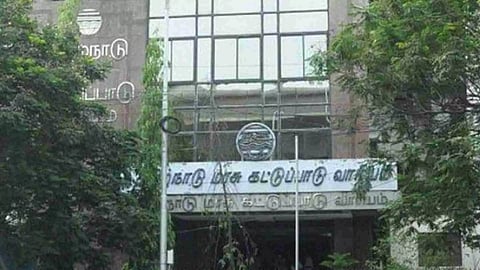

In a development that invoked frightening memories of the Deepwater Horizon oil spill of 2010, and the Exxon Valdez oil spill of 1989, an oil slick had formed in Kosasthalaiyar River and the Ennore Creek located in North Chennai in the aftermath of 36 hours of incessant rain that pounded the metropolis earlier this month. The oil spill, which reached the Pulicat backwaters (a biodiversity hotspot) and the Kasimedu fishing harbour, had prompted a war of words between state government agencies and Chennai Petroleum Corporation Ltd (CPCL), while the National Green Tribunal (NGT) probed the delay in responding to the disaster, for three days after the oil spill occurred.
It was after media reports pointed out the plight of fishermen and Ennore residents that Tamil Nadu Pollution Control Board (TNPCB) inspected the affected areas and directed CPCL to initiate remedial measures. TNPCB had informed the government that CPCL had stored huge quantities of oil than the permissible limit, and had inadequate stormwater drain networks to carry excess rainwater. There was also clear proof that the oil that had leaked from CPCL into the Buckingham Canal, had reached the Ennore Creek and later flowed into the sea.
Last week, government officials said recovery work in Ennore creek was completed. It involved the efforts of over 900 people and the assistance of the local fishermen communities. Following the completion of the oil recovery work from the Bay of Bengal, the government turned its focus towards cleaning of the oil ingress in mangrove areas as it was a job requiring a degree of specialisation.
Apart from 6,200 families in non-fishing areas, the oil slick has affected the livelihoods of thousands of fishermen in the region, as well as mangroves which are clogged with dark oil and grease. The mangroves, important for marine species, such as prawns and crabs to breed, have been affected by effluents from power plants in this area. The southern bench of the NGT has directed the state to submit reports on the effect of the oil spill on marine species and birds. Rescue teams have been pressed into action to look for birds in need of rehabilitation including pelicans.
As of last week, close to 46.8 tonnes of oil waste, containing 15 tonnes of oil, has been removed from the river. The extent of damage, vis-a-vis the contamination, was spread over 5.5 km of sea surface, 4 sq km of Buckingham Canal, and 2 sq km of Kosasthalaiyar. Numerics aside, the Tamil Nadu government finds itself woefully shortchanged in the absence of an approved oil spill disaster contingency plan, as the draft plan sent to the Indian Coast Guard in August 2021 is still unapproved.
Supriya Sahu, Additional Chief Secretary to the Environment Department has lamented that while there are set SOPs to deal with oil spills in the ocean, there are none for such incidents in estuaries. The visuals of fishermen without PPEs, wading through chest deep water contaminated by the oil spill and flushing out the effluents in buckets, using their bare hands was a stark reminder of our desultory approach to the problem, and the utter unpreparedness of the state government, district authorities, and the oil company, when it came to an ecological disaster on shore. Stakeholders can no longer pussyfoot around such issues. They must put their collective might behind building resilience to such episodes, which might only aggravate in the years to come.